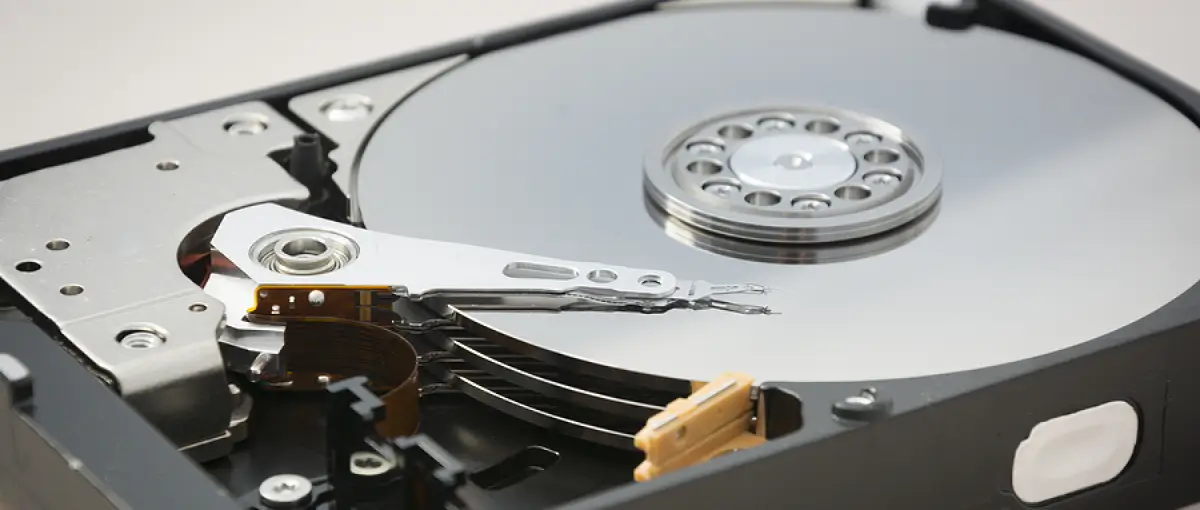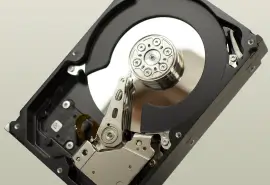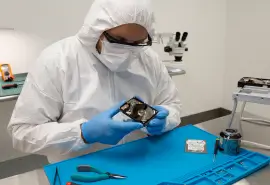Data recovery efforts have rescued lost files for millions of people over the years. It can resolve sudden data loss from hardware failures, software issues, human error, and external threats. But what goes into the process? In this article, we discuss what data recovery entails and offer several solutions, such as free tools and expert tips.
Quick Facts
- Data loss affects almost 26% of users worldwide.
- Over half of companies that experience data loss never recover.
- Data loss has many causes, ranging from catastrophic events to predictable failures.
- Each scenario requires a different approach to maximize the odds of success.
- Free data recovery software often addresses straightforward cases, such as accidental deletion, formatting, and minor file corruption.
- With specialized tools and techniques, a data recovery service is the best chance to reclaim critical files.
What Is Data Recovery?
Data recovery involves retrieving files from a damaged or defective storage device and restoring them to their original state.
Many companies and home users use these services or products when they cannot access data through standard means. It spans various media, including hard disk drives (HDDs), solid-state drives (SSDs), servers, smartphones, flash drives, SD cards, and more.
The process is typically complex. Both hardware and software recoveries are strong options, depending on the situation.
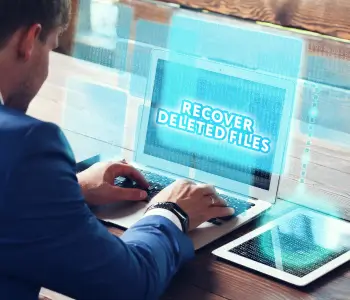
Common Causes of Data Loss
Data loss occurs when users have corrupted, deleted, stolen, or otherwise inaccessible files. There are dozens of reasons why a storage device might fail.
Here are the most common causes of data loss:
- Damaged Media
- Failed Components
- Flawed Firmware
- Accidental Deletion or Formatting
- Corrupted File System
- Malicious Software
- Ransomware Attack
- Forgotten Password
Despite having more reliable storage than ever, data loss is still inevitable. It is just a matter of time. Preparing for these failures and having a response plan could prevent permanent data loss.
Types of Data Recovery
There are two main types of recoveries: logical and physical data recovery. Each category uses specific methods tailored to the unique details of the case.
Logical data recovery retrieves files from functional hardware when software issues or human errors prevent access. Deleted data, file corruption, and virus damage are common examples of logical failure.
The following methods are designed to handle logical cases:
- Data Recovery Software: Programs scan the storage media for recoverable data and reconstruct files to a new location.
- System Repair Tools: Some utilities can rebuild a corrupted file system or table to re-establish access to stored data.
- File Carving: An advanced technique that bypasses the file system to detect traces of data and piece them together through pattern recognition. This manual method recovers data directly from the storage’s free space.
Physical data recovery restores files from a broken storage device by repairing failed components that impede access. It deals with damaged or worn media, mechanical problems, and electrical issues.
Retrieving data from a damaged device often demands:
- Trained Engineers: Certified experts with decades of experience have the technical skills and intuition to recover data in extreme cases.
- Custom Tools: Devices with severe damage require specific equipment to return them to a working condition or extract their data.
- Specialized Labs: A controlled cleanroom filters particles from the air and prevents further media damage during hard drive repair.
An accurate diagnosis is essential to determine the most effective methods.
How To Recover Data
Data loss is stressful. It often involves priceless documents or memories. The first response for most people revolves around getting that data back. When data loss happens, there are two options to consider. You can use data recovery software or call the pros to restore your files.
Try Data Recovery Software

Data recovery software is ideal for handling logical errors, such as accidental deletion, formatting, and simple file corruption.
Software is effective in these cases due to the design of certain storage devices. For example, deleted data still resides on a hard drive’s platter until overwritten. Therefore, programs can scan the disk for data and restore those files to a separate drive. You can sometimes reverse data loss in a matter of minutes with powerful software.
Here are several benefits these tools provide:
- No or low costs
- Reduced downtime
- Ease of use
However, software can have limits. It cannot address devices with physical damage or mechanical issues. These are common causes of hard drive failure. Running software in these cases could worsen data loss. Assess the value of the lost files and risk of losing them before using data recovery software.
Note: Recovering deleted data on SSDs is more complex. Unlike HDDs, SSDs perform frequent garbage collection. Unless disabled, SSDs send a TRIM command that purges data from its cells after deletion. While TRIM helps long-term performance, it complicates data recovery. As a result, software is not a reliable option for SSDs with deleted data.
Do not download data recovery software to the affected device. Doing so could overwrite recoverable files. Install the program on an external hard drive instead.
Free Data Recovery Tools
The following programs are potential solutions to sudden data loss.
1. SecureRecovery® Undelete
SecureRecovery® Undelete can restore permanently deleted data on Windows 2000 and later. The software works even when users have emptied files from the Recycle Bin.
Our straightforward tool searches for deleted data in free space. It recognizes the NTFS and FAT file systems often found in Windows. After locating deleted data on the disk, the software restores those files to another drive. The whole process is painless.
SecureRecovery® Undelete is free for personal use. It is not bundled with other software and there are no hidden charges or forced upgrades.
2. SecureRecovery® Media Suite:
Our experts also developed a suite of SecureRecovery® software to confront data loss on specific media and legacy devices. These tools have algorithms that can respond to varied data loss events. It has variants for Hard Drive, Flash, CD and DVD, Diskettes, and Removable Media.
The user-friendly suite is designed to retrieve data after accidental deletion, file corruption, and standard logical issues. They are tailored to perform recoveries on a distinct device. The software does not demand special skills and works on Windows 2000 or newer platforms. Each version includes the Data Browser feature, which gives users more control over the process. You just need to browse the disk, preview its data, and save the files to a chosen location.
Our free SecureRecovery® suite could get your data back today.
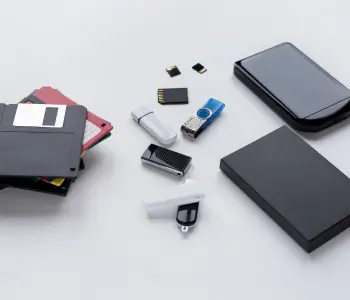
When to Call the Pros

Certified services are the best choice in situations where you must recover your data or all alternatives have been exhausted. They are familiar with a wide range of data loss scenarios and maintain cutting-edge labs to minimize further media damage. They also have specialized tools and techniques for the most difficult failure types. Trained engineers are capable of developing custom solutions to unique cases.
In some instances, that skill set could be the difference between a full recovery and permanent data loss. Learn the benefits of professional data recovery services, from expertise and equipment to complete peace of mind.
These services provide the highest success rates. Nothing compares to the value of an expert who can take the lead on a complex case. In addition, the first attempt is the best chance to recover data from a failed device. Having someone who has seen it all and can adapt as needed improves the odds of a successful outcome.
The typical data recovery process follows:
- Diagnostics: The service discovers the cause of data loss and prepares a plan to recover files.
- Repair: An engineer restores a device with damage or defects to a working condition.
- Image: They create a sector-by-sector copy of your device to preserve the stored data.
- Recover: Experts retrieve files from the media using the appropriate methods and tools.
- Validate: The service saves recovered data to a secure drive and verifies files.
- Return: They send data back on a storage device of your choosing.
A streamlined process can remove a lot of the stress related to data loss. Consider an expert when restoring lost data is the only option.
Bonus: Do-it-yourself data recovery methods are tempting from a convenience and cost perspective. However, modern storage devices are intricate. Attempting home repairs will jeopardize your files and complicate professional recoveries in the future.
Data Recovery Specialists
Data recovery is complex under the best circumstances.
Since 2007, Secure Data Recovery has been the proven leader in data recovery services and software. In that time, we have resolved over 100,000 cases and reunited customers with billions of files. Our experience, expertise, tools, techniques, certifications, and controls allow us to provide the best service and software in the industry. We even offer free diagnostics and quotes and back our work with a No Data, No Recovery Fee guarantee. You receive your files, or pay nothing.
Call us at 800-388-1266 or request help to speak with one of our specialists and reclaim what matters most.

